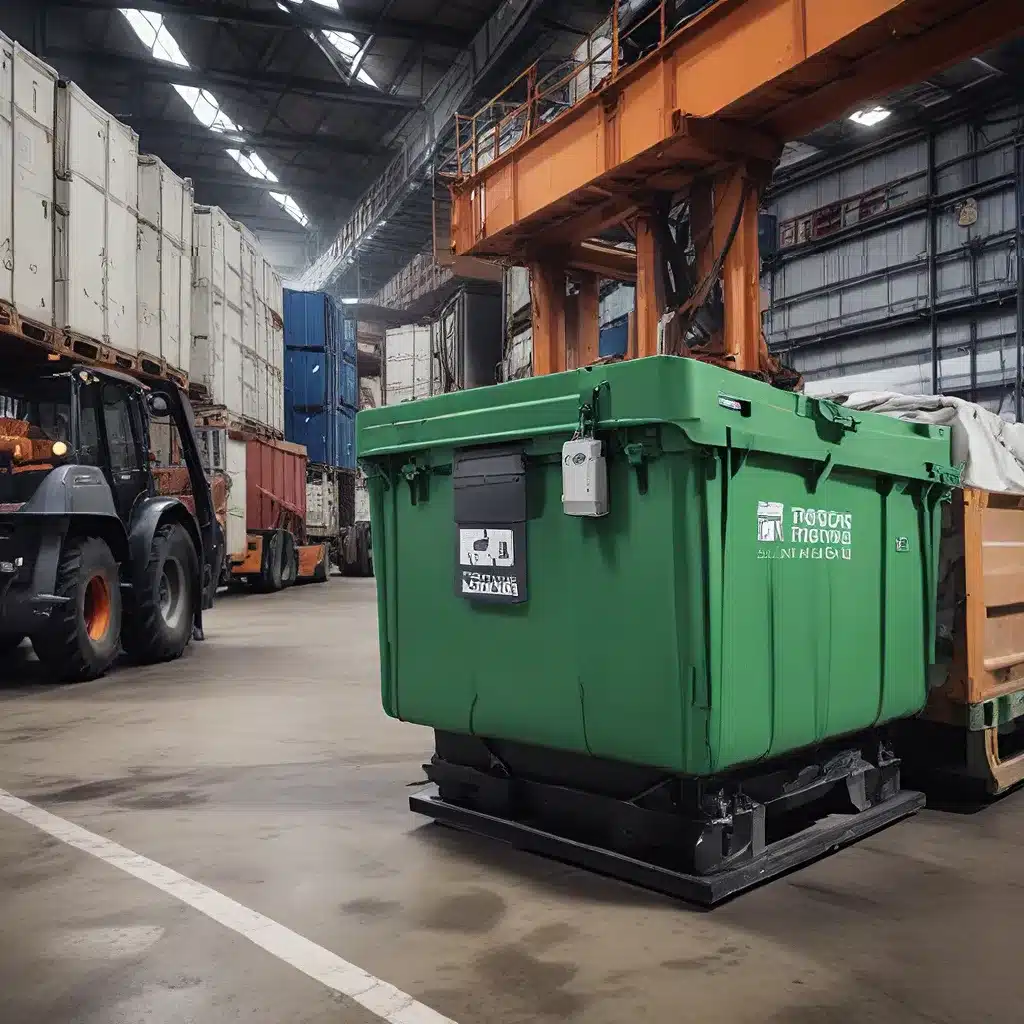
In the rapidly evolving landscape of sensor networks and the Internet of Things (IoT), the integration of RFID (Radio Frequency Identification) technology with sensor fusion has emerged as a powerful enabler for intelligent waste management solutions. By harnessing the synergies of these advanced technologies, we can revolutionize the way we approach the challenge of efficient and sustainable waste handling, ultimately paving the way for smarter, more eco-friendly cities.
Unlocking the Potential of Sensor Fusion
Sensor fusion is a fundamental concept in the realm of sensor networks, where multiple sensors are combined to gather a more comprehensive and accurate understanding of the surrounding environment. This approach goes beyond the capabilities of individual sensors, leveraging the strengths of diverse sensing modalities to provide a holistic view of the monitored system.
In the context of waste management, sensor fusion empowers a multitude of applications. By integrating various sensors, such as weight sensors, level sensors, and motion detectors, waste management systems can gain real-time insights into the fill levels of waste containers, the frequency of collections, and the overall efficiency of the waste collection process. This information can be used to optimize route planning, schedule collections based on demand, and identify areas that require immediate attention, ultimately leading to a more efficient and cost-effective waste management system.
Moreover, the integration of environmental sensors, such as temperature and humidity monitors, can provide valuable data on the decomposition rates of organic waste, enabling better management of waste streams and the potential for biofuel or compost production. This holistic approach to waste management, powered by sensor fusion, holds the promise of significant environmental and economic benefits.
RFID: A Transformative Technology for Waste Management
RFID technology has been a game-changer in various industries, and its application in waste management is no exception. RFID systems consist of three main components: tags, readers, and antennas. These components work together to identify, track, and manage waste containers and their contents, revolutionizing the way we approach waste handling.
RFID tags can be attached to waste containers, allowing for the unique identification and tracking of individual bins or dumpsters. As these containers are collected and transported, RFID readers strategically placed along the collection routes can monitor the movement and status of the waste, providing real-time data to waste management authorities.
This RFID-enabled tracking system offers numerous advantages:
-
Improved Efficiency: By monitoring the location and fill levels of waste containers, waste management companies can optimize their collection routes, reduce unnecessary trips, and ensure timely and efficient waste pickup.
-
Enhanced Accountability: RFID tracking allows for improved accountability in the waste management process, enabling the identification of any irregularities or mishandling of waste.
-
Waste Stream Optimization: The data gathered through RFID-enabled waste tracking can be used to analyze waste streams, identify opportunities for recycling or repurposing, and implement more effective waste reduction strategies.
-
Regulatory Compliance: RFID-based waste management systems can assist in ensuring compliance with environmental regulations and reporting requirements, providing valuable data for monitoring and auditing purposes.
Securing the IoT Ecosystem for Waste Management
As sensor networks and IoT-enabled waste management solutions become increasingly prevalent, the importance of cybersecurity cannot be overstated. The integration of RFID technology, coupled with the widespread connectivity of IoT devices, introduces new vulnerabilities that must be addressed to ensure the integrity, confidentiality, and availability of the entire waste management system.
Robust security protocols, such as end-to-end encryption, access control mechanisms, and secure data storage, are crucial in protecting the sensitive information collected by the sensor network and RFID systems. Additionally, regular firmware updates, secure authentication procedures, and comprehensive monitoring systems can help mitigate the risks of cyber threats, such as data breaches, unauthorized access, and system disruptions.
By proactively addressing security concerns, waste management providers can build trust in their IoT-enabled solutions, ensuring the confidentiality of sensitive waste data and the reliability of the overall system, ultimately enhancing the sustainability and resilience of the waste management infrastructure.
Towards Energy-Efficient Sensor Networks
As the integration of sensor networks and IoT technologies becomes more widespread in waste management applications, the energy consumption of these systems emerges as a critical factor. Ensuring the long-term sustainability and scalability of these solutions requires a focus on energy-efficient designs and management strategies.
One approach to addressing this challenge is the optimization of sensor node placement and network topology. By strategically positioning sensors and RFID readers, the energy requirements of the overall system can be minimized, reducing the need for frequent battery replacements or the deployment of costly power infrastructure.
Moreover, the adoption of energy-harvesting technologies, such as solar panels or piezoelectric harvesters, can provide a sustainable power source for sensor nodes, reducing their reliance on traditional battery-powered systems. This not only enhances the operational longevity of the waste management network but also contributes to its environmental friendliness.
Additionally, the implementation of energy-efficient communication protocols and data processing algorithms can further optimize the energy consumption of the sensor network, ensuring that the valuable data collected is transmitted and analyzed in a cost-effective and energy-conscious manner.
By embracing these energy-efficient strategies, waste management providers can future-proof their IoT-enabled solutions, ensuring their long-term viability and environmental sustainability.
Conclusion
The integration of sensor fusion and RFID technology has emerged as a transformative force in the realm of intelligent waste management. By harnessing the power of these advanced technologies, waste management providers can optimize their operations, enhance their environmental impact, and develop more sustainable solutions for the communities they serve.
As the sensor networks and IoT landscape continue to evolve, the importance of security and energy efficiency will remain paramount, ensuring the reliability and scalability of these innovative waste management systems.
Through the strategic deployment of sensor fusion, RFID tracking, and energy-conscious designs, the future of waste management is poised to become more intelligent, efficient, and environmentally responsible, ultimately contributing to the development of smarter, more sustainable cities around the world.